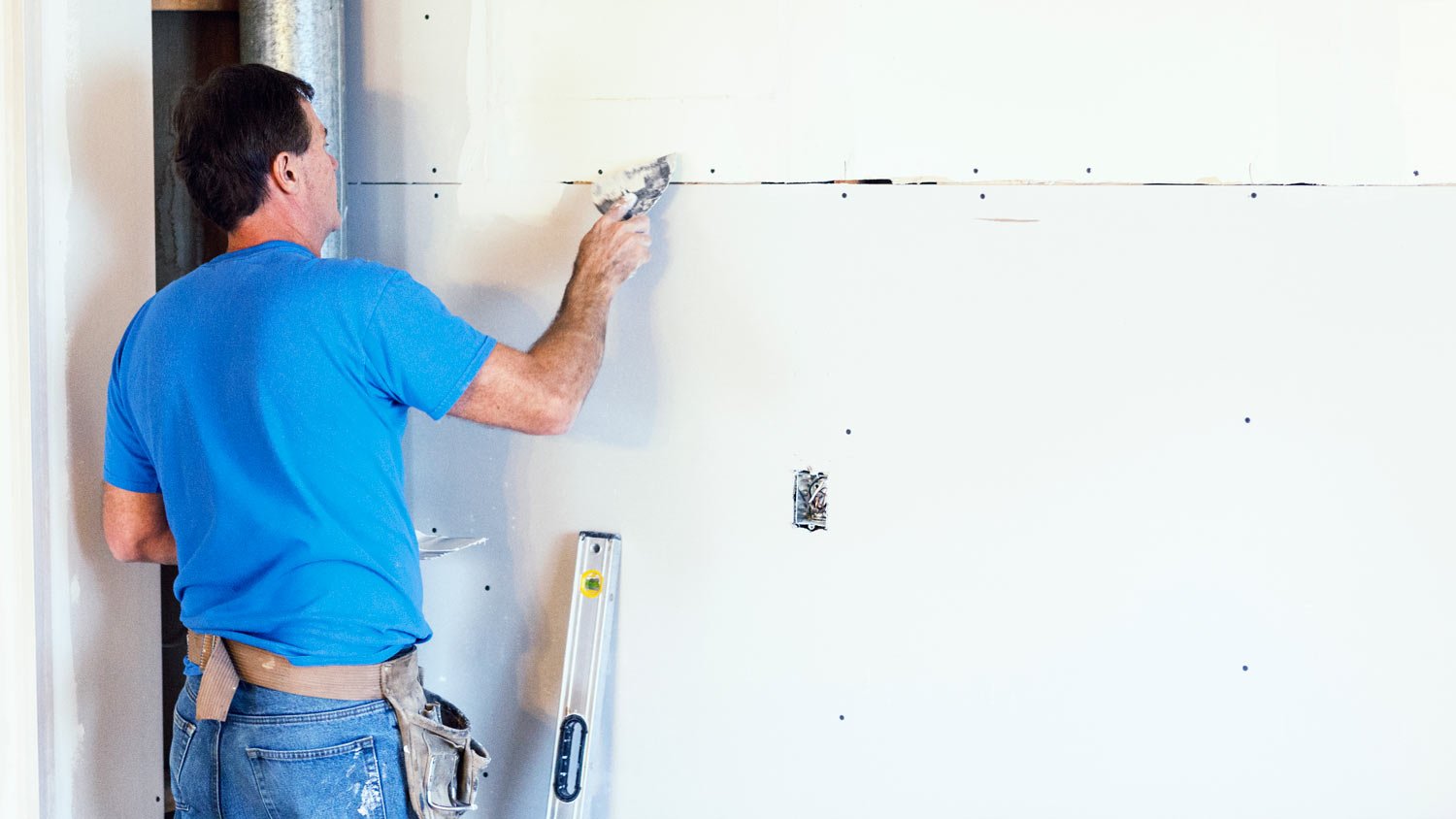How Much Weight Can Drywall Hold? Here’s How to Find Your Drywall’s Weight Limit
How heavy is too heavy?


With the right mounting technique and hardware, drywall can hold up to 100 pounds.
Some types of hardware can carry more weight than others.
For example, a nail in a stud can hold 20 pounds, while a toggle bolt can support 100 pounds.
When mounting something on drywall, it’s best to fasten it to a wall stud.
If you can’t hang an object on a stud, use drywall anchors for extra support.
Planning to hang something on drywall? Whether it’s a picture frame, floating shelf, or TV, it’s important to understand how much weight drywall can hold before you get to work. Otherwise, whatever’s on the wall could come crashing down and potentially hurt you or someone else in your house. Here’s what you should know about the weight limit of drywall.
What to Know Before Hanging Anything on Drywall
Drywall is a common building material used on interior walls and ceilings. While it’s relatively durable, drywall can’t support much weight on its own. If you need to hang a heavy mirror, large TV, or another weighty object, it’s important to mount it on a wall stud or secure it with drywall anchors rather than nailing it directly to the drywall.
Drywall Weight Capacity for Different Types of Mounting Hardware

The weight capacity of drywall is largely dependent on the mounting hardware you use. Your local drywall installer can give you some specific advice based on your situation. However, here are a few common types of hardware, as well as how much weight they can support, to get you started.
Drywall Anchors

Although it’s best to mount objects to a wall stud, that’s not always possible. If a stud isn’t available on the part of the wall where you’re hanging something, you can use drywall anchors instead.
As you can see below, there are several types of drywall anchors, each of which has a different weight capacity.
| Type of Drywall Anchor | Weight Limit |
|---|---|
| Expansion anchors | 25 pounds |
| Winged plastic anchors | 25 pounds |
| Molly bolts | 50 pounds |
| Threaded anchors | 75 pounds |
| Toggle bolts | 100 pounds |
Nails
As long as it’s attached to a stud, you can use a nail to hang smaller items on drywall. In this situation, the maximum weight limit is 20 pounds.
Picture Hangers and Hooks
Like nails, these devices are best for hanging lightweight objects on drywall through a stud. They can hold up to 20 pounds, but heavy-duty varieties can support more weight. You’ll find the weight limit listed on the packaging when you buy one of these products.
Frequently Asked Questions
Yes, drywall can hold a 50-pound TV. However, when mounting a TV, you’ll either need to attach it to wall studs or use drywall anchors. If you use anchors, make sure to buy a type that can hold at least 50 pounds. Molly bolts, threaded anchors, and toggle bolts are all good options. For extra support, you can also install a wall mounting plate with the anchors.
It depends on the specifics of your project. If you’re using a stud to secure your object to the drywall, you won’t need the extra support of drywall anchors. But if there aren’t any studs in the area where you plan to hang the object, you should use drywall anchors.
There are a few easy ways to locate a wall stud without a stud finder. First, try knocking on the wall with your knuckles. Most parts of the wall will sound hollow, but when you tap over a stud, it will sound more solid. Alternatively, since studs are spaced 16 or 24 inches apart, you can measure those distances from a corner of the room, which will always have a stud.
Yes, you can hammer a nail into a wall stud. But before you do, it’s important to confirm that you’re actually nailing into a stud—and not wiring, pipes, or ductwork. To check, find a few more studs in the wall, then measure to make sure they’re either 16 or 24 inches apart.















